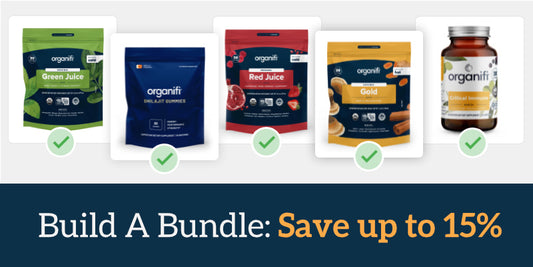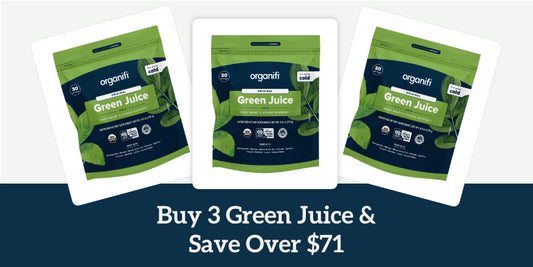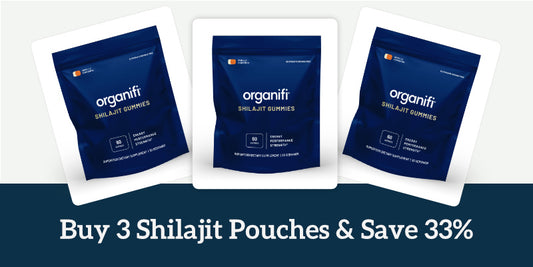Did you know that there’s such a thing as “National Physical Fitness and Sports Month” in the US? It has been observed in the month of May since 1983 and this year, it got us thinking:
What’s a seemingly healthy practice that can jeopardize your fitness journey?
And the answer was simple:
Consuming health foods and fitness drinks that are not healthy at all - but look like they are!
Green-washing and health-washing are marketing practices that label food and beverage products (among others) with words like “organic,'' “green,” “100% fruit,” and other seemingly healthy or conscious labels, but hide sugar and chemical additives that are not so good for your health.
Simply put:
Fitness drinks can be hidden sugar traps.
But don’t worry, these are not life-threatening -unless you’re really overdoing them- so, if you’re a fitness drinks lover and are worried you might be feeding your body the wrong kind of post-workout fuel (or just enjoy the occasional ‘fit drink’), this post is right for you:
We’ll teach you how to read fitness drinks labels to avoid excess sugar (also applicable for your non-sports related fit drink of choice)
Natural Sugar vs Added Sugar, what gives?
People have gotten more health and wellness oriented, which means they seek healthier alternatives to soda drinks, ice cream, and doughnuts. This created a market for health food, fitness drinks, green juice, juicing and the next trendy fit drink, to satisfy that need.
However, a lot of these foods and beverages have just as much (and sometimes more!) sugar than the sodas and ice creams you’re trying to replace.
This is why that’s an issue:
Fruits, vegetables and dairy foods naturally contain sugar. “Added sugar” is the amount of processed or extra sugars and syrups added to foods for flavor, texture, or preservation during processing.
When you consume a lot of sugar both natural and added or processed your body doesn’t properly eliminate the excess. When sugar comes from fruit, for example, the fiber in the fruit slows down the sugar absorption process and your body responds better to it.
Some sugar is used by the body for fuel and energy, and some just provides empty calories and excess glucose that your body stores as fat for a rainy day (that hardly ever comes) and that leads to a slow build up that may lead to obesity, diabetes, dental decay, and chronic inflammation, among other health issues.
Reading Labels: Determining if your fitness drinks are healthy
Ok so we know not all sugar was created equal and that too much is not so bueno, how can you tell if your treat is guilty as charged?
Easy: calculate the total sugar in it and the calories, and refer back to your “discretionary” calories allowance for the day.
How Much Sugar is Enough Sugar?
According to The American Heart Association (AHA) the daily added sugar limit is:
- Men: No more than 9 teaspoons or 38 grams, a total of 150 calories
- Women: No more than 6 teaspoons or 25 grams, a total of 100 calories
For reference, a single 12OZ can of regular soda has eight teaspoons of sugar -that’s almost the entire recommended maximum added sugar for men and two teaspoons over the limit for women! That same can of soda accounts for 130 calories and zero nutrition.
We know the occasional treat is not going to kill you, but you can see how multiple drinks with high sugar content per day or week can contribute to that belly bloat you’re may be trying to get rid of.
Read the Label and Calculate Added Sugar:
This is an easy formula to check if your drink or snack is taking you over the recommended added sugar limit:
- Check the label on the back of your fitness drink or ‘fit drink’ or choice.
- Look at the Nutrition Facts panel
- Find the line labeled “sugars” it will have both the natural and added types as a total.
- Count the grams of sugar and/or calculate the calories coming from them.
Example:
Every gram of sugar has four calories in it. If your fit drink or fitness drink of choice has 15 grams of sugar (per serving) that’s 60 calories from the sugar alone.
Pro Tip:
If math isn’t your thing, you can also tell the amount of sugar in your fit drink reading the ingredient list, the closer to the beginning of the list the larger the amount of the ingredient. It can say something like “water, evaporated cane sugar, grape extract, honey.” Sugar would be the second and top 4 ingredients, meaning it’s mostly sugar with some water.
Sugars Hidden in Your Fitness Drink:
Here we’ll list a number of ingredients to watch out for when you’re out there shopping for your next post-workout or afternoon pick-me-up.
- Glucose: can be metabolized by almost every cell in the human body
- Fructose: metabolized mostly by the liver. Usually used as added sugar can overtax the liver. Read about the symptoms of unhealthy liver function.
- Sucrose: also known as table sugar, it is 50% glucose and 50% fructose
- Barley malt and barley malt syrup
- Evaporated cane juice; evaporated cane juice; cane juice
- HFCS (High-Fructose Corn Syrup)
- Fruit juice and fruit juice concentrate
- Cane juice crystals and cane juice
- Agave nectar
- Aspartame
- Acesulfame
- Carob syrup
- Dextrose
- Lactose
- Maltose
- Maltodextrin
- Malt syrup
- Maltol
- Molasses
- Muscovado
- Saccharin
- Treacle
- Turbinado
- Xylitol
Chemical Additives to Watch Out for:
It’s not just sugars hiding in plain sight in that fitness drink, sometimes it’s chemical additives also added for color, texture, flavor or preservation that may have serious health repercussions if consumed in excess:
- Blue #1, popular in fitness drinks
- Red #40, food coloring and a possible carcinogen
- Yellow #6 and Yellow #5, may sensitivity to viruses and has caused animal deaths in testing
- PEG (polyethylene glycol)
- Monosodium Glutamate (MSG)
- Sodium Nitrite
- Carrageenan (may increase fasting levels of blood sugar)
- Sodium Benzoate (found in carbonated or fizzy drinks)
I don’t really work out, is my fitness drink healthy?
So you’re not into fitness drinks and sports beverages are something you go for only when the sun is out and you’ve been sweating your behind off, that’s OK. You should still keep an eye out for these seemingly ‘fit’ drinks that may actually put extra pounds around your waist:
- 100% Fruit Juice (this is tricky, you may have to read the label, it’s always better if combined with vegetables. It may be just another type of sugar)
- Ice Tea (black, green, mint green, matcha, and lemon tea)
- Lemonade
- Aloe Vera
- Sweetened Almond Milk (and other non-dairy milk)
- Flavored yogurt
- Flavored water
- Fizzy flavored water
- Flavored coconut water
- Vitamin-infused water
Keep in mind that some of these are just fine to have. We don't condone totally cutting out anything that you love. But just keep in mind the good old "moderation is key" sentiment when it comes to reaching for a fitness drink.
What can I drink post workout this summer?
It may seem like sports drink options are limited and that you have to be hyper-vigilant but like everything else in life, moderation is the key.
- Water: yes the most overlooked and super hydrating drink of them all is just plain, natural, mineral or clean tap water.
- Coconut water: pure 100% coconut water (extra points if directly from the coconut) is a great source of electrolytes that hydrates and replenishes without unnecessary sugar.
- Alkaline Water: not a big fan of plain water? Add some citric fruit chunks to it and naturally flavor it up. Some perfect matches are orange lime, lemon, lime, or strawberry slices.
- Mint water: you can freeze mint chunks in water and have ice-cold mint water. Refreshing!
- Unsweetened green tea or homemade tea.
- Vegetable green juice: yes! Dark leafy greens like kale, swiss chard, bok choy, spinach, and beet greens are also packed with electrolytes.
- Red Juice - no added sugar, tons of superfoods - a guilt-free win-win in our book!
Enjoy your fitness drink of choice every now and then, but don’t make it a daily habit. You can also kick off National Physical Fitness and Sports Month with a healthy fitness drink you can sip all summer long: Organifi Red Juice. We like to throw it in our shaker bottle and enjoy during a sunny walk or post-workout for recovery and energy.
Bottom Line:
Not all sugar is bad and you should not be afraid of natural sugar or fruit juice, however, added sugar in foods and drinks has been vastly linked to weight gain, diabetes, hard-to-lose fat, and many other health conditions. Sugar is used by manufacturers to enhance flavor, improve texture, or extend the shelf life of food and beverages.
Learning to read the label of your favorite fit drink or fitness drink will help you stay away from sugar traps that keep your fitness goals out of reach and/or harm your body.




